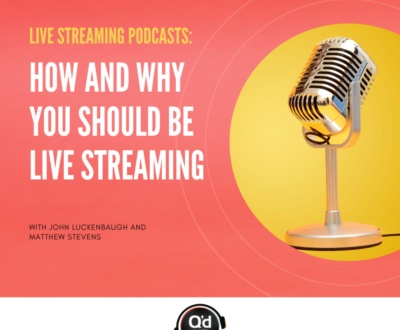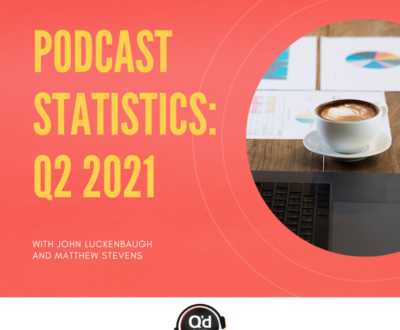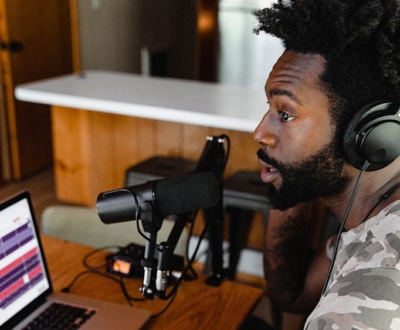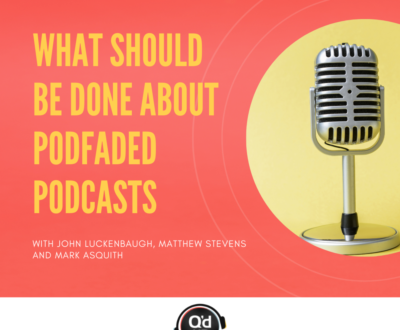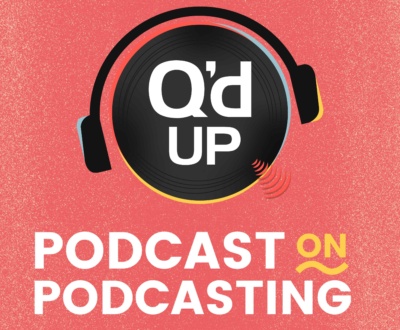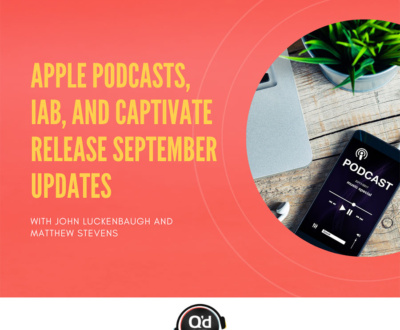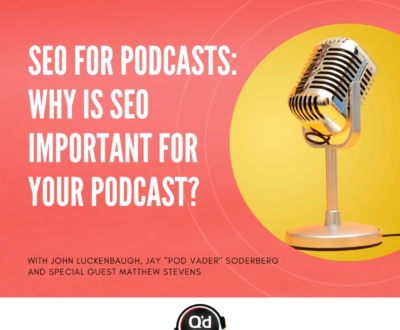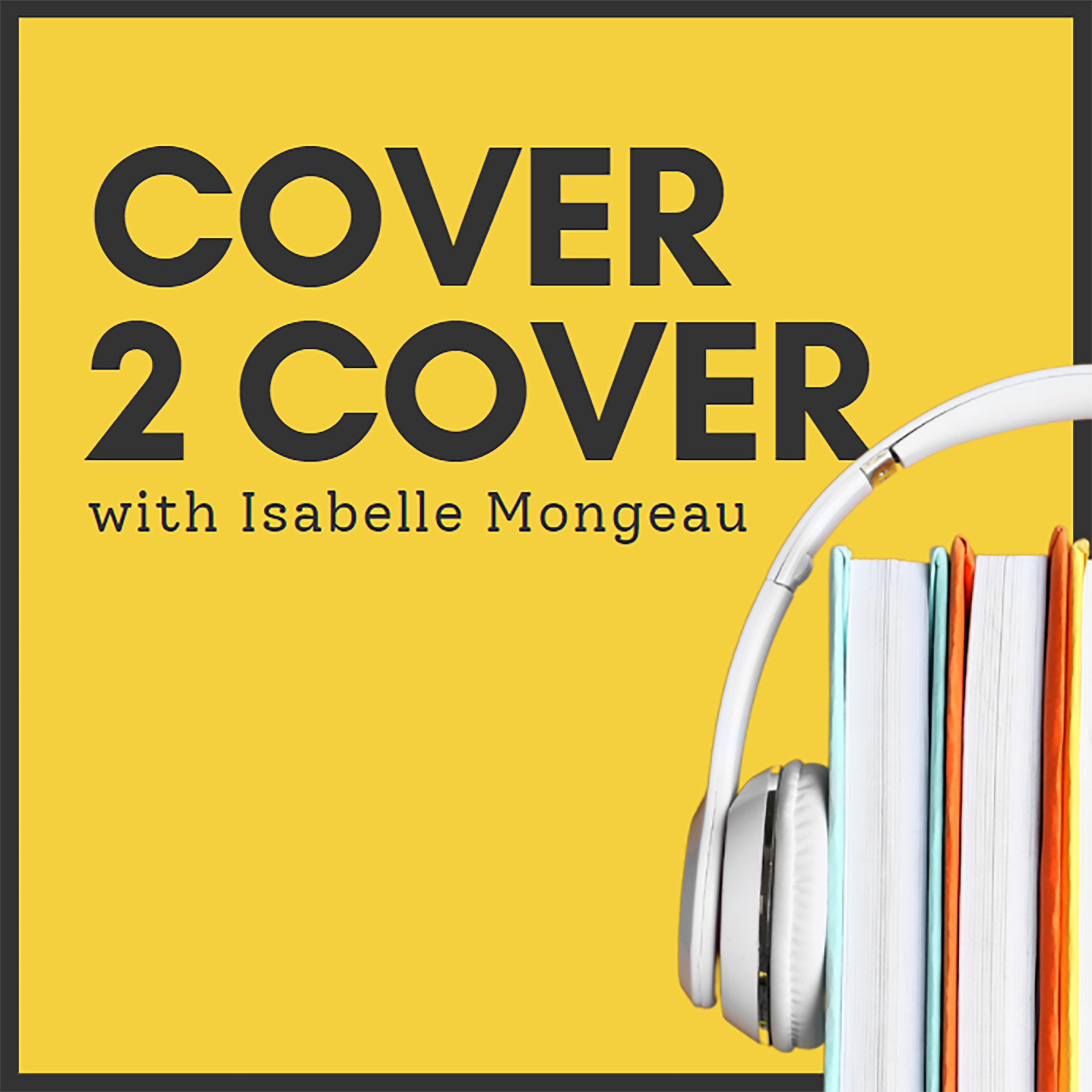
You’ve finally written your book and now comes the time to record an audiobook version of it. But you’ve never done any audiobook production and you don’t want poor audio to ruin your literary masterpiece. It’s clear you need a little help and Q’d Up is here to deliver.
Join Isabelle Mongeau on this episode of Cover 2 Cover as she takes you through some of the basics of audiobook production. From making a decision on who will narrate it to what ACX standards are, and how it all makes a massive difference in your finished audiobook
Audiobook Production:
Follow Q’d Up:
Listen to Cover 2 Cover:
Episode transcript:
You watch the file export to your desktop. You did it. After hours of recording, rerecording, and wrestling with the audio interface, you’ve finally managed the first few chapters of your book. Sample chapters, to hear how the writing would sound read aloud.
The computer pings. It’s ready. You click on the file, close your eyes and listen.
It sounds horrible. No, no that’s just you being insecure.
You keep listening, but your smile fades with every syllable. If hearing your own voice wasn’t bad enough, the performance sounds like a creature, a Grendel, slinking out of a swamp.
Every breath crackles against the mic, every Ss slithers out of hell –and worst yet – every swallow sounded dry, painful. You rub your forehead – maybe it’ll get better? Then there’s an audible smack of your lips.
It’s horrific. How did your literary masterpiece birth such a monstrosity? You drop your head onto the table. In a moment, you feel the soft fur of Muffin rubbing against your forehead.
You look up and watch your cat stroll across the keyboard. Her little paws step on the delete key and your deformed file whooshes back into the electronic swamp from whence it came.
You can’t even protest. Muffin was the only one strong enough to kill the thing.
It’s decided. If you’re going to record an audiobook, you’re going to need some advice.
Hi and Welcome to Cover 2 Cover, a biweekly podcast that teaches you how to write, produce and market your audiobook. I’m your host, Isabelle Mongeau from Q’d Up Audio and today I want to lead you through the steps of recording your audiobook.
When deciding to record your audiobook, the first thing you must consider is – who’s recording it? It’s common for independent authors to want to voice their own story – there are even authors at big publishing houses that do the same.
Natalie Haynes, author of A Thousand Ships, a national best seller and an NPR’s best book of year in 2021, voiced her own retelling of the Trojan War. The late Maya Angelou and Toni Morrison voiced their award-winning pieces I Know Why the Caged Bird Sings and Beloved.
As someone who has heard these outstanding performances, I understand why authors want to read their own work. You know your work better than anyone else. You have an idea of the intended tone and inflection. You probably have a specific way you want certain lines delivered. Besides, if you’re an independent author with a small budget, voicing your own audiobook may seem like the cheaper option.
However, you need to ask yourself a few questions first.
Do you have the time?
Recording an audiobook usually takes twice as long as the final product. For example, if your book is say, 350 pages, it usually comes out to about 10 hours as an audiobook. However, that 10 hours takes 20 hours to record – if you know what you’re doing.
Next, you have to ask yourself – no matter how uncomfortable it may be – do you have the talent to voice your own book?
I think we’ve all put down an audiobook or a podcast simply because we don’t like the narrator. I’m sure there will be some listeners who don’t like the sound of my voice
Narrating an audiobook is more than just reading it. It’s acting. It’s being able to convey the genre, tone and dialect of the story. A great narrator breathes life into a book. A poor narrator can kill it
You knock on the door. Glancing at your watch, you remind yourself you’re not late. You can’t be late to the best producer in the state. The door opens and a scrawny teenager pops his head out. You start. Oh, are you…? John?
The teenager glances left to right.
Come inside, he says. We don’t have much time.
The teenager disappears and you grab the door before it swings closed. You slip inside the darkness and stumble down a stairwell lit with red lights. Are you about to get murdered?
Beyond another door, a space opens up, the front wall lined with a giant black panel that blinks a rainbow of lights, broken up by knobs and switches. Monitors surround the panel, with giant speakers hanging from the ceiling. On the far wall is a window into a recording booth.
A man in chunky headphones swivels into view, head bobbing, fingers clicking.
You step forward. “Oh. Hi, John—”
“Shhh” the teenager cuts in. “You wouldn’t disturb Michelangelo when he’s painting the Sistine chapel, would you? And it’s Mr. John to you.”
You step back. The man taps a beat on a wood surface. After a few minutes, he leans back in his chair and pulls the headphones around his neck. He spins to look at you.
“Hello. Welcome to my studio. You’re Questlove’s assistant, right?”
“No, I’m trying to do an audiobook—”
“Ahh, yes. The writer.” Mr. John snaps his fingers and the teenager scurries over to a mini fridge on the right. He pulls out a glass, then tug on a tap on the wall. Beer pours out of the tap and soon the frosty glass rests in Mr. John’s grip.
You clear your throat. “Oh – but the computers? Won’t that spill…”
Mr. John waves his hand. “I’m a professional. Don’t try this at home.” He takes a big gulp. “So, how can I help you?”
You explain your project and disastrous recording yesterday, as Mr. John nods his head. “And what’s your mic’s polar pattern?” he asks.
“My what?”
“You said your sibilance was too overpowering. How far are you from the mic, is it set off-axis?”
You stare at him. Polar pattern, sibilance? You never said that –you don’t even know what those are?
He creaks back in his chair. “I’m not even going to ask about your noise floor.”
You admit it, you’re lost. You beg him to explain the entire audiobook production process, from start to finish.
First, you need your manuscript done. Once that’s complete, Mr. John tells you you’ll need to record in a professional studio, with professional help. You can choose to voice the book yourself – or he can provide the voice talent. He knows some people – you want a woman? Man? How old? Do you need someone bilingual? Is there a certain dialect to your book? You need French Canadian? Mr. John’s got French Canadian.
Once the recording is done, he’ll begin the editing process. Cleaning it up, taking out the background noise, eliminating the mouse clicks, studders, mic pops, leveling the audio. Then, he has to master the audio – which is a whole other beast. Upload it to the platforms you want and wait about 30 days for approval.
He finishes his beer and the teenager scuttles over to grab the empty glass. Mr. John claps his hands together:
“Here’s the thing. It’s still an investment, so I get it. Sure, you want to sound good. But when it comes to audiobooks, you need to sound good. Your book won’t be accepted on to Audible if you don’t. And Audible is 90% of the audiobook market. So, it’s not about meeting my standards or even yours.”
Mr. John point up to the sky. “It’s about meeting the standards of good ole’ Jeff Bezos”
Producing an audiobook is like producing a podcast. There’s a lot more that goes into it than just turning on the mic and speaking. Here at Q’d Up, we have expert audio engineers to help you avoiding sounding echoey, tinny, inconsistent, and who can overall just create a great soundscape for your projects.
Unlike podcasts, however, audiobooks can be rejected from platforms if they don’t meet the audio submission requirements. For Audible, it’s called ACX. Does your audiobook meet the ACX level of quality?
Over the years, we’ve received dozens of audiobook files from clients claiming that their recording is ready for Audible, Libro.fm or other audiobook sites. Our audio engineers open the files and cringe.
You see, even if you’ve been able to mimic the sound quality of a professional studio at home – which is challenging but possible – mastering an audiobook to ACX standards is a whole other beast, as Mr. John said.
ACX has specific requirements for room tone, file size, peak values, headers and even a specific number of seconds of silence between one section and the next.
Believe me, the last thing you’ll want to do as a writer, is go through 20 hours of raw audio to edit it down to 10 hours, clean it up, and then listen to the final project over and over again to make sure that there is exactly 3 seconds between every single chapter and section of your book. Not only is audio editing laborious, it demands years of experience, and a trained ear.
The untrained ear won’t even catch certain background noise, mic pops, or subtle mouth sounds. As a writer, I’m amazed every single day by what our audio engineers can pick up on from a simple two-minute recording. Mr. John can tell the size of my home recording studio just from my raw audio—as well as whether it’s carpeted, decorated, and positioned next to any appliances.
And here’s the thing. The ACX Quality Assurance Team at Audible can do the same. And they will reject your title if you have only two seconds between chapters instead of three.
You shift on your feet. “So, you’re telling me, I definitely need an audio engineer. I need someone to help me record, edit and master my audiobook so I can get on the platform.”
Mr. John clears his throat. “Unless you’re the one with over 20 years of experience. Oh wait, that’s me.” But he smiles anyway.
“Look,” he says. “You did your part. You wrote a great book. Now it’s up to me, to turn it into a great audiobook. You made a star. Now, I’ll make it shine.”
You shake hands and thank him.
The door opens and the teenager sticks his head in.
“Questlove is here” he says.
Mr. John slides his headphones back on. “I’ll see you next week.”
Producing an audiobook can be scary. You need to write, record, edit, master, and upload the audiobook onto the platforms you desire. But with the right people by your side, the process can be easy and stress free. We at Q’d Up help authors turn their manuscripts into professional audiobooks to be accepted by Audible, Libro.fm and more. Our authors don’t have to lift a finger – after all, you’ve already written a whole book!
Thank you for listening to this episode of Cover 2 Cover. Join me every other Monday to hear more about how to get your friends and family listening to your story – from Cover 2 Cover!
For even more free knowledge, follow us on Twitter at QDUPAudio or myself @Izzys_ink_
If you’d like someone to handle the entire production process for your story, be sure to contact us at myaudiobookagency.com
Request a free quote
We offer high-quality production, distribution, and marketing for podcasts and audiobooks. Contact us today for a free, no obligation quote

